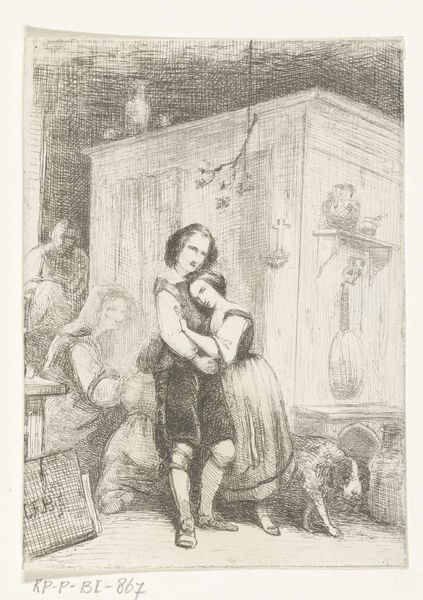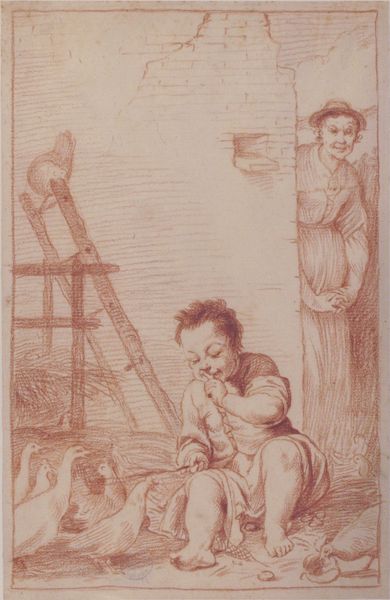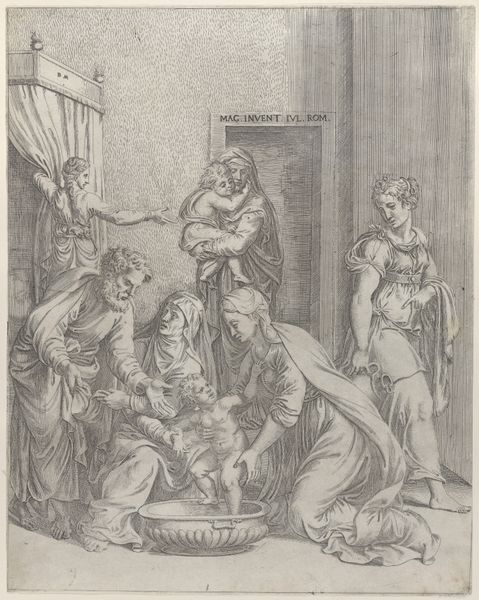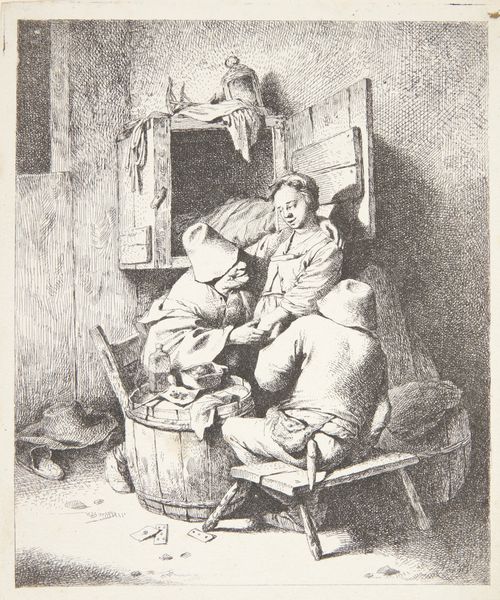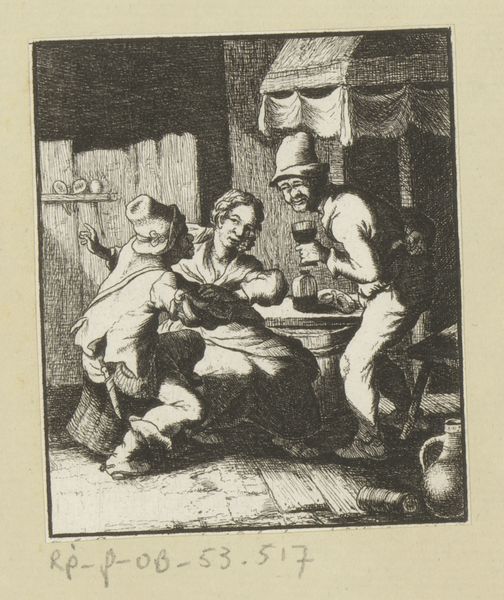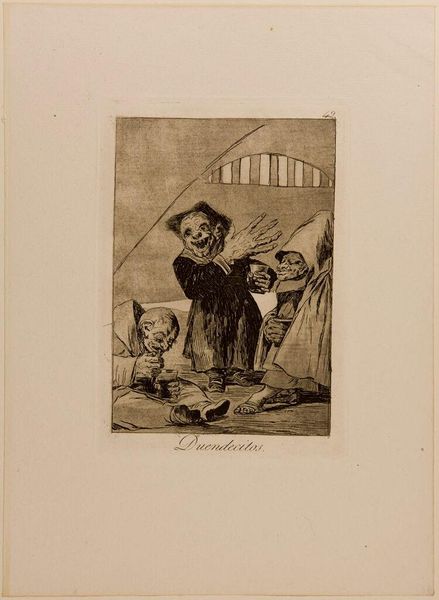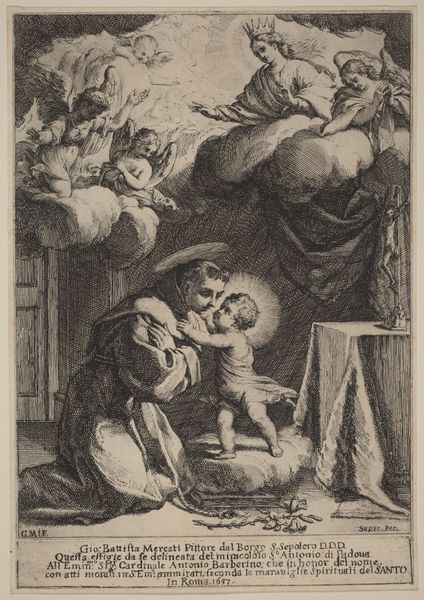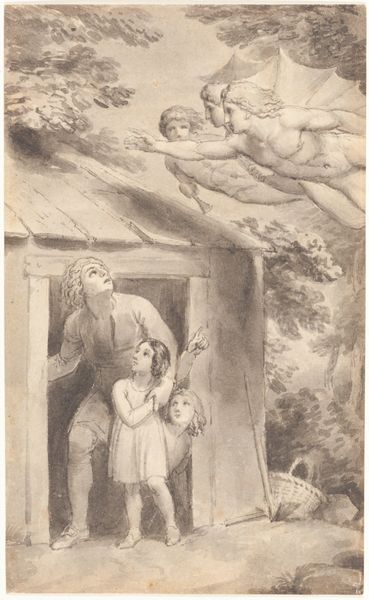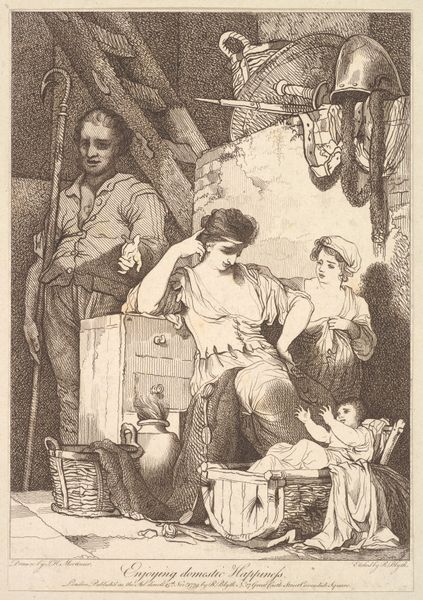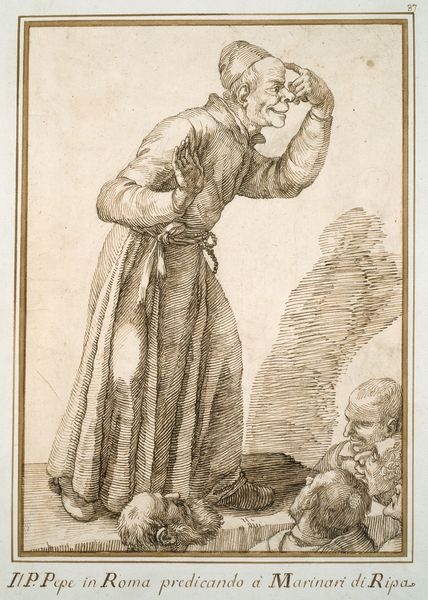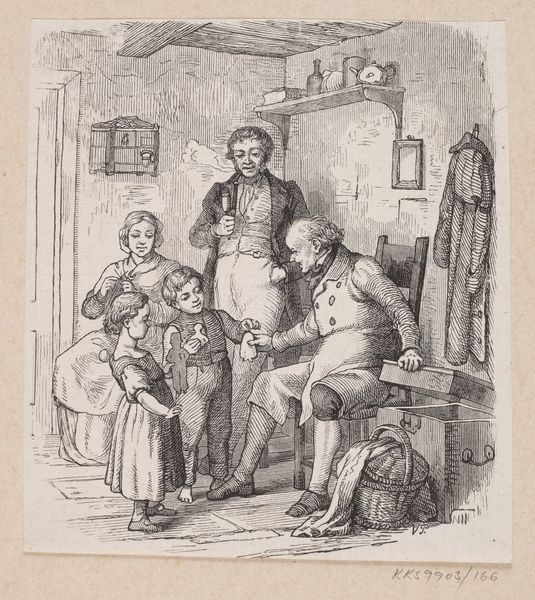
Plate 9: Marcolfa finds Bertoldino hatching eggs, from "Bertoldo, Bertoldino, and Cacasenno" 1705 - 1715
0:00
0:00
drawing, print, engraving
#
drawing
#
baroque
# print
#
genre-painting
#
history-painting
#
engraving
Dimensions: Sheet (Trimmed): 9 1/16 × 5 7/8 in. (23 × 15 cm)
Copyright: Public Domain
Editor: Here we have Giuseppe Maria Crespi's "Plate 9: Marcolfa finds Bertoldino hatching eggs, from "Bertoldo, Bertoldino, and Cacasenno", created between 1705 and 1715. It's an engraving, and there’s a striking contrast between the innocent scene of the child with the birds and the looming figure of Marcolfa. What societal dynamics are at play here, do you think? Curator: It's tempting to see this as a simple genre scene, but consider the broader context of early 18th-century Italy. Crespi, though working within the Baroque tradition, was also pushing boundaries by depicting everyday life. This image engages with power structures: the adult, Marcolfa, spies on the child, disrupting a private moment. Editor: So you see the act of observing as significant? Curator: Absolutely. Marcolfa’s gaze represents social control. We see an adult's control over childhood, but even deeper the control of those with privilege on those with little social power. What might the act of “hatching eggs” symbolize in this dynamic? Consider how the expectations placed on children can be both nurturing and constricting. Editor: It could symbolize imagination or freedom, things that Marcolfa, as an authority figure, is implicitly suppressing with her presence. Curator: Precisely. This print, while seemingly lighthearted, prompts us to think about societal expectations, the gaze, and the limited freedom afforded to individuals based on their social standing. Crespi cleverly uses an everyday scene to question accepted norms. What can we infer from the almost caricaturistic quality of Marcolfa's figure? Editor: Maybe Crespi is suggesting we shouldn't take her authority too seriously. It makes me think about the ways institutions exert power, even when they appear ridiculous. Thanks! I definitely have a fresh perspective now. Curator: Indeed, it is these questions, situated between then and now, that keeps historical context alive. The value lies in our continuous effort to reflect.
Comments
No comments
Be the first to comment and join the conversation on the ultimate creative platform.
